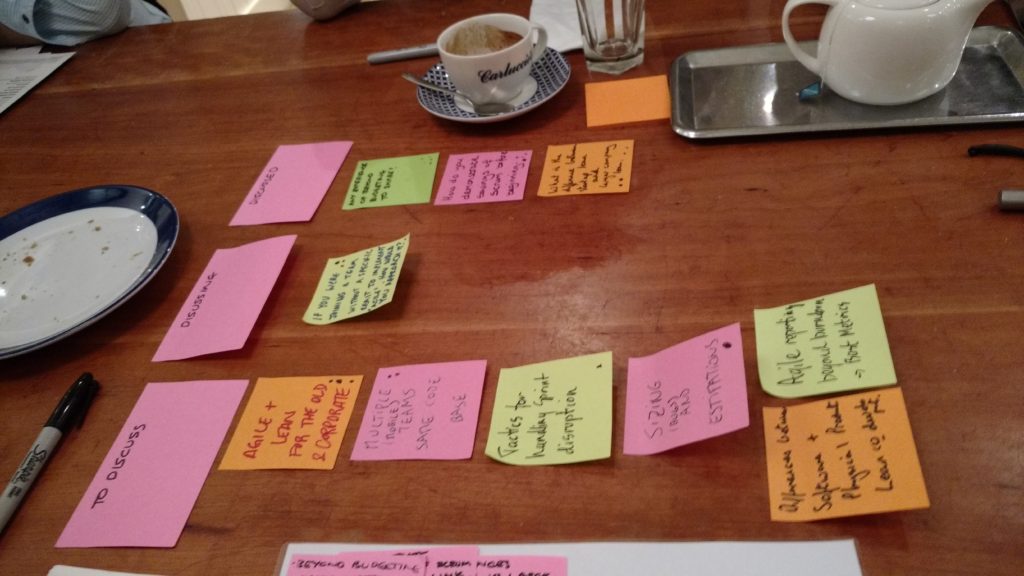West London Lean Coffee – November. Here’s a write up of the event.
We had a group of 9 people and some great discussions.
Things We Discussed
Experiences of Beyond Budgeting
We talked about experiences of Beyond Budgeting and how working incrementally can help finance teams support agile technology teams. We thought that this would work best in non listed companies, and the key point was enabling buy-in from finance teams to the approach. Wondering what Beyond Budgeting is – look at this post.
How Do You Demonstrate Savings Of Scrum Before You Start?
How can you convince a team to try scrum, or any other agile methodology? How can you demonstrate the savings that could be possible? We discussed how focusing on the outcome was important and how selling a change as a low risk experiment could help you get approval to try something new out. It’s well worth looking at the information that Government Digital Services make available for hints and tips – if it works in government then it must be do-able elsewhere, right? 🙂
The Differences Between Startup Lean and Large Company Lean
Some great discussions about the differences between small and large companies and their cultures. We agreed that behaviour was very important and how the requirement for more structure comes as companies grow. There was a great example of sizes and one scales; making a business unit max 80 people, a squad no more than 12 and teams of 6-8. Once one reaches these limits then it’s most likely time to start thinking about an alternate organisational setup in order to keep a company able to effectively employ agile methodologies
It’s worth checking out Management 3.0 for more details on ways in which you can help build great teams.
If You Were Joining a Team Without a Specific Remit To Implement Agile Then How Would You Approach It?
We talked about how joining a new team is a challenge and how one might initiate change, despite being the new person on the team. The key point were to not focus on agile as such, look at the culture and pain points and lead by example. Use the opportunity of being new to ask simple questions and highlight what might appear obvious. And make sure that the team can see what the improvement could be by using some agile approaches.
It’s also worth establishing if you have a remit to change things and if so, then understand what the change appetite of the company is.
Things We Didn’t Talk About
- Differences between software and physical product lean and development.
- Agile reporting beyond burn down.
- Sizing bugs and estimations. This post from Johanna Rothman could be useful.
- Tactics for handling sprint disruption.
- Multiple mobile teams using the same codebase.
- Agile and lean for the old and corporate.
The next Lean Coffee is on December 15th, 8:30am in Carluccio’s Westfield, Shepherds Bush. Hope to see you there.

